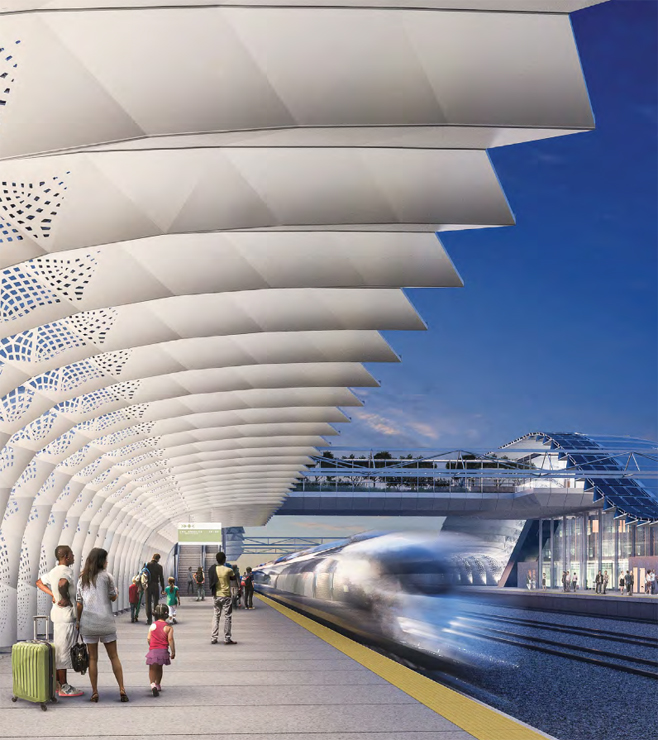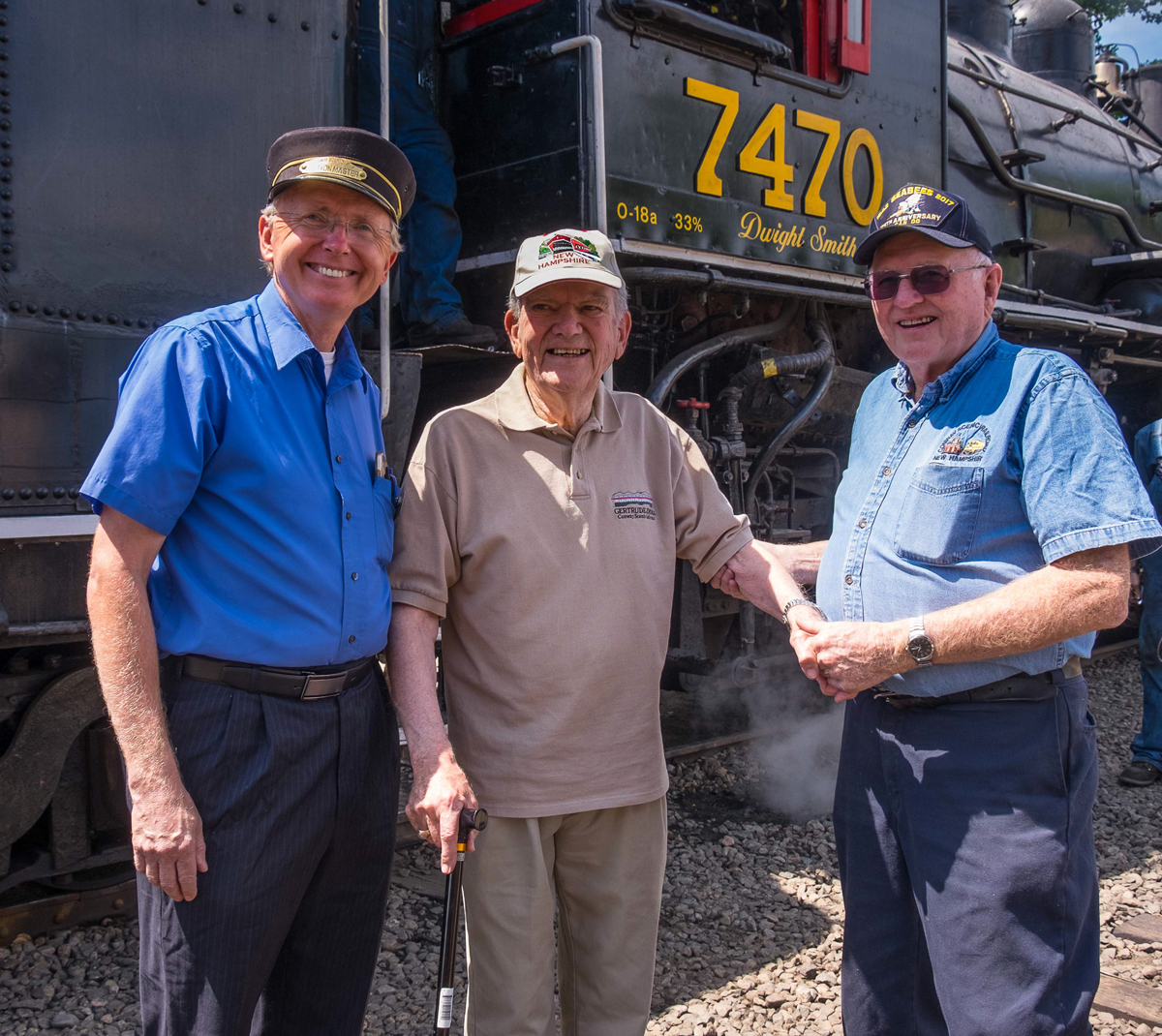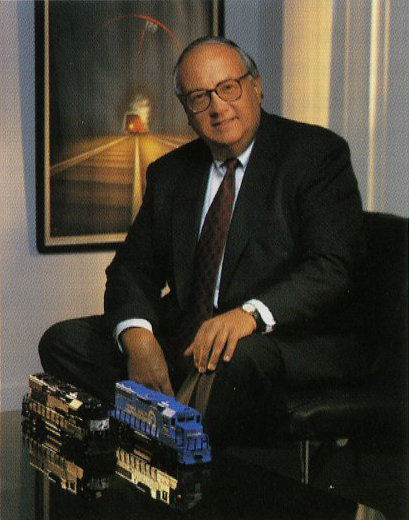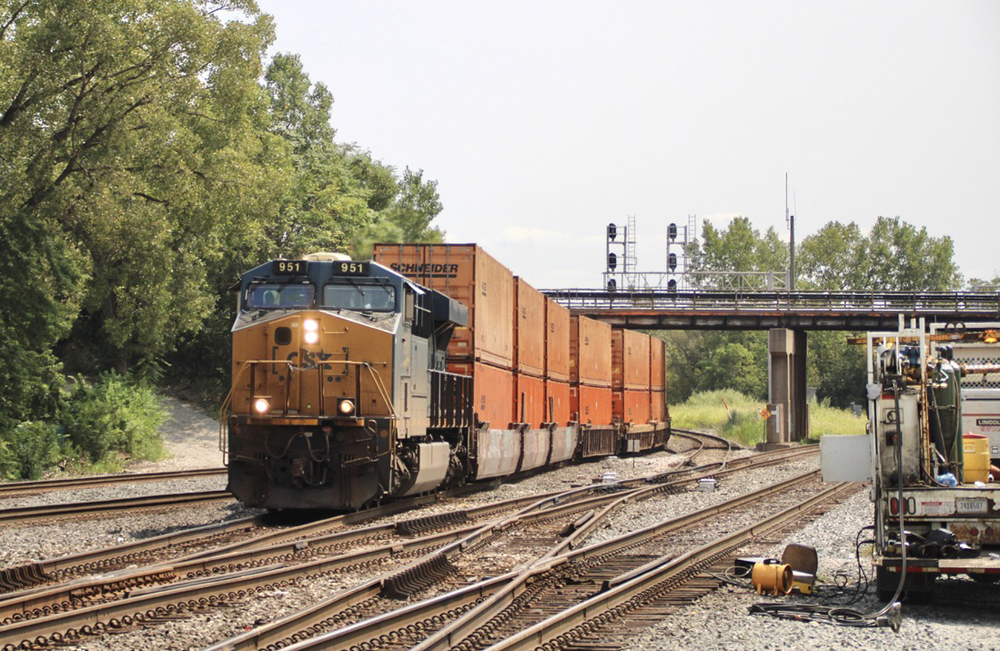
SACRAMENTO, Calif. — The fate of California’s high speed rail project hangs on a funding decision the California legislature will make before adopting the new state budget in June.
“I do think it’s time to decide: Is California committed to moving to electrified, clean, high speed rail as a way to move people around the state and connect regions that are not well connected today?” project CEO Brian Kelly told Trains News Wire after unveiling high speed rail’s latest business plan. “My answer to that is yes. And my governor’s answer to that is yes. And I believe, and my governor believes, that the Biden administration supports that effort.”
This decision was postponed last summer when the California Assembly asked the High-Speed Rail Authority not to purchase rail, electrification, and signaling systems for the Central Valley line under construction between Merced and Bakersfield. But on Tuesday, the authority board unanimously put the funding question back in the legislature’s lap and begin procurement this summer [see “Revised California high speed rail plan …,” Trains News Wire, Feb. 10, 2021].
With no set source of funding to connect the Valley line to the major metropolitan centers the railroad was conceived to serve, legislators said last summer they had a better idea. Wouldn’t it be better to take more than $4 billion — what’s left of the high-speed rail bonds that voters approved 12 years ago — and spend them on transportation projects needed now in the Los Angeles Basin, which is years away from high-speed rail service even in the best scenario?
Kelly helped craft a deal that essentially delayed the business plan due last year in exchange for a chance to make a case for continuing on the project’s present course. That course is for early service in the Valley, later linked to the San Francisco Bay Area and then to Los Angeles.
He said the legislators asked for an independent review of ridership numbers of Central Valley high speed rail and rail transit ridership increases if the money were spent elsewhere. And they wanted to know how high speed rail would work with Amtrak’s diesel-powered San Joaquin service that already connects Valley cities to Oakland and Sacramento and carried 1.1 million passengers in fiscal year 2019, the last year unaffected by the COVID-19 pandemic.
“We looked at those and we got answers that we’ve now included in this business plan,” Kelly said. “And it’s why we have not changed course, because basically what the independent review said is what we concluded before. Our ridership numbers were reasonable.”
RSG, a transportation consulting group based in White River Junction, Vt., said high-speed rail in the Valley would generate 4.8 million new riders while similar expenditures in Los Angeles would generate 2.5 million new riders and 2 million in the Bay Area.
The San Joaquins cover the Bakersfield-Merced segment in 3 hours, 11 minutes, twice as long as leased 185-mile-per-hour electric trainsets that the authority is studying for Valley service. Eventually, those would be replaced by 220-mph trains from the Bay Area. Amtrak makes five intermediate stops, while there will be only three stops on high speed rail. Passengers would connect between San Joaquins and high speed rail at Merced for trips to or from Oakland and Sacramento, or with Altamont Corridor Express trains to San Jose and Silicon Valley.
“The Central Valley just seems to be — by really all metrics — the favored corridor for this analysis,” RSG’s Greg Spitz told the authority board.
Spitz acknowledged, however, that the Valley presents a risk. “The Central Valley is still primarily a driving corridor and now there’s going to be a lot of new transit. … It’s just hard to know for sure whether or not people are going to going to make that change.
The High-Speed Rail Authority signed a memorandum of understanding last fall with the San Joaquin Joint Powers Authority, which operates the Amtrak service with state-owned equipment, to operate the initial high-speed service. That means operating losses — which Kelly said the new service would incur — would be charged to the San Joaquin authority, not the high speed agency.
That would avoid violating Proposition 1A, the 2008 ballot initiative that authorized the project. It forbids the authority from operating trains at a loss. Once the Valley is connected to the Bay Area via a high-speed line from Madera to Gilroy, and then along the Caltrain corridor to San Francisco, service would be operated by Germany’s Deutsche Bahn, the authority’s early train operator. Kelly said ridership models then predict no operating losses.
While the project seeks the legislature’s approval on bond funding, it is also seeking more federal help.
“In the short term, what I’d like to do is unwind the damage that Trump did,” Kelly said.
Part of that is restoring $929 million in funding the Trump administration tried to revoke and is the subject of an ongoing lawsuit. But the authority also wants to extend the deadline for spending matching funds for the original federal stimulus grant awarded by the Obama administration. Kelly said the pandemic cost a year of construction progress and the money couldn’t be spent fast enough.













